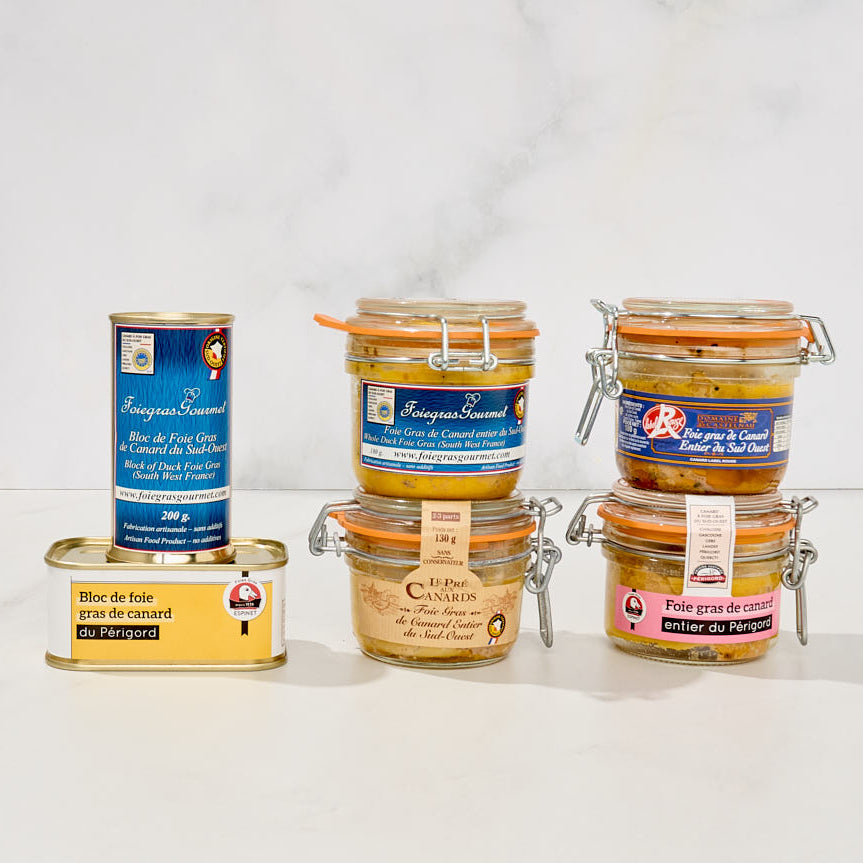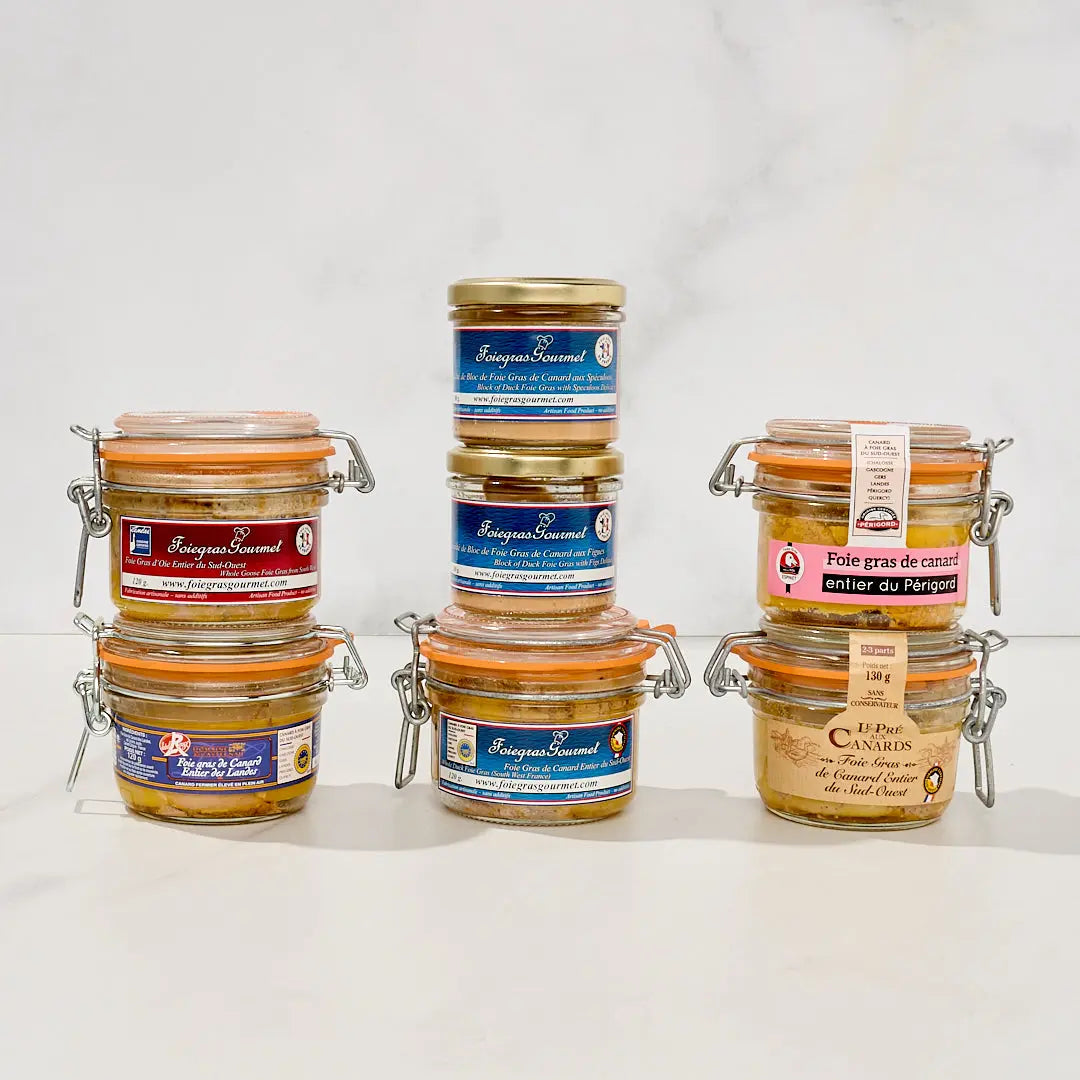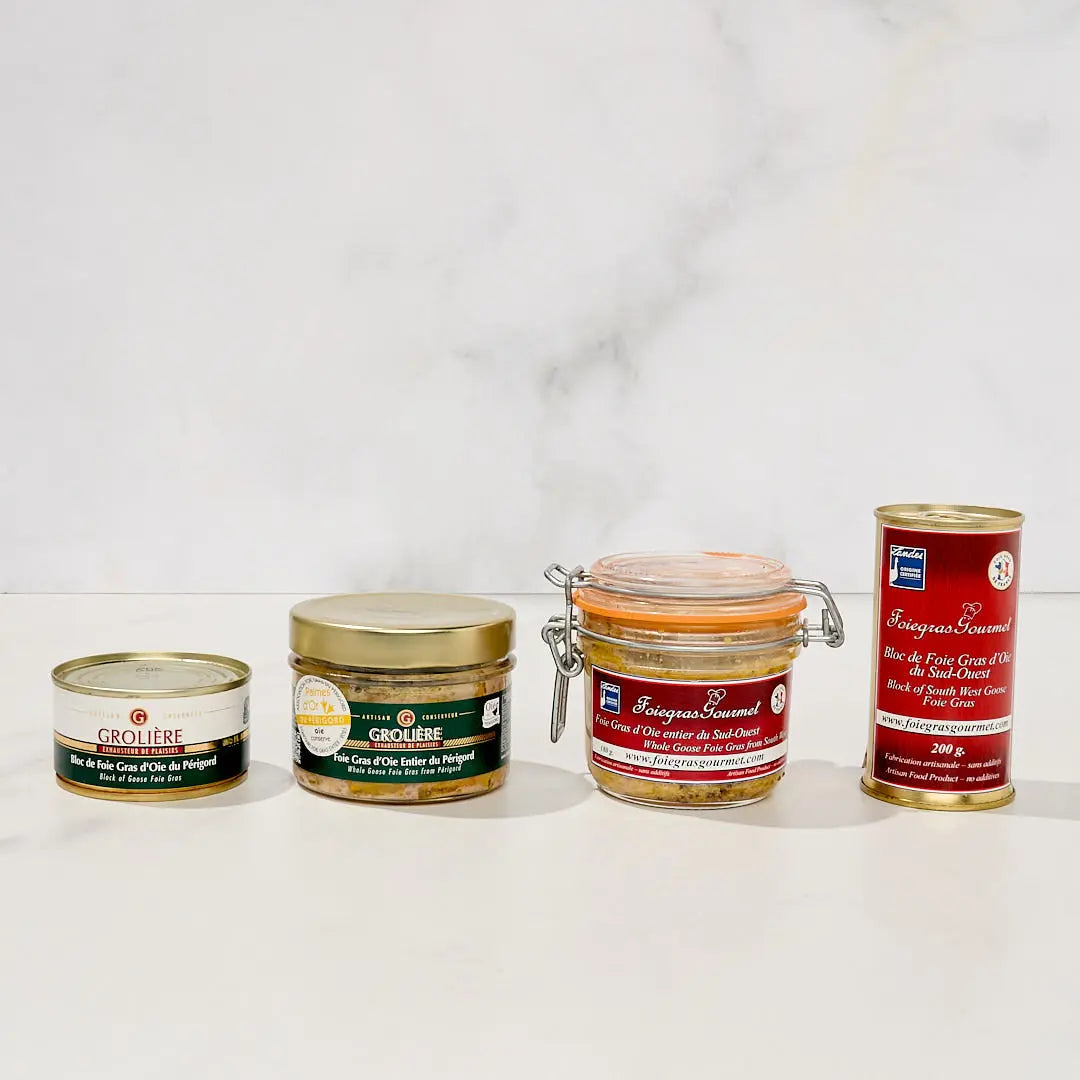Types and derivatives of foie gras: what you need to know before buying
According to French tradition, foie gras is consumed at the beginning of the meal. However, there are different derivatives of foie gras that can easily be confused with the original foie gras, which are completely different in terms of flavor, texture, appearance, and price (although sometimes they have a high price simply for containing foie gras), so we will clarify the important points here to avoid any confusion.
Generally, the types of foie gras include fresh or frozen raw foie gras, ideal for quick and delicate preparations; canned foie gras, which allows you to enjoy its flavor for a longer time; and semi-cooked foie gras, with a creamy texture and a more intense flavor. These varieties offer a culinary and budgetary versatility, ranging from classic foie gras toast to sophisticated recipes like pan-seared foie gras with wine reduction or foie gras terrine with fruit jelly.
Do not confuse foie gras with other products.
Although there are different forms and presentations of foie gras, what really matters from a legal point of view is the name that appears on the label. This is due to the fact that there are many canned products on the market, which can be confusing for the consumer. Some products use "foie gras" in their name but actually contain mixtures or low percentages of foie gras, which can lead to paying a relatively high price for something that is not foie gras in the strict sense.
"This is why the names on the boxes and jars of foie gras are governed by strict regulations, which guarantee the consumer the authenticity and quality of the product. We will explain the difference here."
Canned foie gras derivatives
Foie gras pâté: 20 to 50% foie gras, mixed with other meats.
Foie gras pâté is a spreadable paste containing between 20% and 50% foie gras, depending on the amount of other meats or ingredients added. Its low liver content and the possible variation in quality explain its very affordable price.
'These pâtés, whether made with duck or goose foie gras, do not guarantee the quality or origin of the foie gras.'

It is possible to find many pâtés and terrines with a variable proportion of foie gras: from the classic pâté Périgueux with 40% foie gras to the countless grandmother's pâté recipes containing little duck foie gras.
Of course, some of these pâtés can be made artisanally and be delicious. But the problem is that many different foods are mixed: foie gras with pork liver, meat, duck fat with pork fat, and also flours, egg powder, alcohol, and even colorants. artificial flavors, preservatives and others additives.
Foie gras mousse: at least 50% foie gras
This is a common recipe made from goose or duck foie gras, it is easy to prepare with ingredients such as butter, seasonings, and even white wine. Its texture is more smooth and creamy.

Foie gras parfait: at least 75% foie gras
This preparation generally contains 75% foie gras and is silkier than pâté. Among other ingredients, it contains whipped cream and butter, making it a creamy and flavorful product.

Canned foie gras varieties
Now, the protagonist: 100% pure foie gras, let's see some varieties of foie gras.
Foie gras block: 100% reconstituted foie gras ✅
The duck foie gras block or goose foie gras block is processed to obtain a fine paste. The best duck foie gras blocks are made simply with emulsified and molded foie gras, salt, and pepper. It is cooked to perfection between 105 and 115 degrees, giving it a slightly creamier texture than whole foie gras. Ideally, you can find it without colorings, preservatives, or additives. The foie gras block spreads easily on a slice of bread or gingerbread, making it easy to present at cocktails or refined appetizers.

Block of foie gras with pieces : 100% foie gras ✅
This is a variant presentation of the foie gras block, which includes small pieces of duck or goose liver mixed with water, giving it a texture between the creaminess of a traditional block and the consistency of a whole foie gras. Generally, a block of foie gras with pieces contains about 30% pieces, in other words, it is a kind of foie gras block with 30% pieces of whole foie gras.

Whole foie gras: 100% foie gras (duck or goose) ✅
Generally kept in a glass jar or presented in a cloth, it is a piece of foie gras or, at most, two pieces of two different foie gras, depending on the size of the jar. This is the traditional French way of eating foie gras and the texture is firmer and more consistent than for the other products seen previously. Be sure to obtain a jar containing 100% duck or goose liver, which is normally the case when it is labeled "whole."
At Foie Gras Gourmet, you can purchase whole duck foie gras or whole goose foie gras from the South-West of France, which, in addition to the above elements, meets all the quality and animal welfare requirements specific to artisanal production and the strict specifications of European certifications such as the IGP Protected Geographical Indication "Foie Gras du Sud-Ouest."

You can finally buy whole or block foie gras to make your own homemade preparation of good quality, similar to a pâté, mousse, or parfait of foie gras but without the additives that can be found in industrial products. Get your favorite foie gras in just a few clicks and receive your order in just a few days wherever you are in the world.











